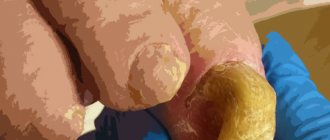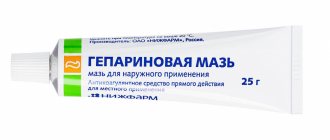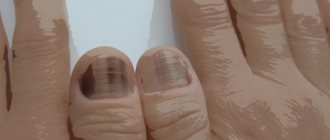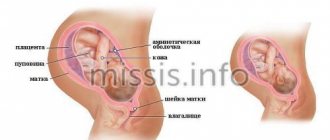General information about the disease
Arthritis of the ankle joint is an inflammatory process that has different origins, symptoms and course. The disease can be independent (primary) or develop against the background of some existing process (secondary). Arthritis is divided into acute and chronic. ICD-10 code M00 – M99.
The ankle joint is a movable joint formed by three bone structures: the heads of the tibia and fibula of the leg and the talus of the foot. To the right and left of the talus are bony elevations - the ankles. The peculiarity of the joint is its resistance to external influences, in this it is much superior to the knee joint. It has a good blood supply and innervation and is protected by ligaments that firmly hold it in the desired position.
Arthritis of the ankle develops at any age. In children it is predominantly juvenile idiopathic arthritis (JIA), in women it is rheumatoid lesions, in men it is reactive arthritis.
Causes
The causes of ankle arthritis vary. Very often, joint inflammation develops after an injury. Closed injury is accompanied by aseptic inflammation, which can go away on its own.
The cause of the development of purulent arthritis of the ankle and foot is the consequences of coccal infection entering the joint cavity after open injuries, surgical interventions or intra-articular injections. Sometimes the cause of the pathological process is a sexual or intestinal infection suffered some time ago. This kind of arthritis is called reactive, and it has a hereditary predisposition. Another disease that has a genetic basis is rheumatoid arthritis, the development mechanism of which is associated with autoimmune processes (allergy to the patient’s own tissues). Infectious arthritis develops against the background of specific infections: brucellosis, syphilis, gonorrhea, tuberculosis. The ankle is affected relatively rarely, usually with gonorrhea.
Arthritis can also be caused by psoriasis, gout, diseases of the gastrointestinal tract (GIT), connective tissue, etc.
Hereditary pathology is characterized by the presence of trigger factors that give impetus to the onset of the disease. These are previous infections, hypothermia, stress, the presence of foci of infection and concomitant diseases, excess body weight, a sedentary lifestyle, heavy physical activity, and unfavorable living conditions. There are also occupational hazards. The risk of developing ankle arthritis increases in people in such professions as dancers, loaders, weightlifters, military personnel of certain branches of the military, etc.
Symptoms of Ankle Arthritis
Despite the significant differences in the course of different clinical forms of the disease, they also have many common symptoms that can be used to suspect arthritis of the foot or ankle. It's worth paying attention to them.
First signs
In the acute course of arthritis of the ankle joint, severe pain occurs in the ankle and foot, tissue swelling, redness of the skin and increased temperature over the site of inflammation. Sometimes the patient’s general condition suffers: fever, chills, and malaise appear. With such complaints, patients immediately consult a doctor. With adequate treatment, the inflammatory process can almost always be cured. If left untreated, the inflammation subsides, becomes chronic and gradually leads to dysfunction of the limb.
The situation is much more complicated with chronic arthritis of the foot and ankle. They begin gradually, imperceptibly. The patient does not always pay attention to such “little things” as moderate pain in the ankle and foot, stiffness of movement in the morning and does not immediately seek medical help. This usually happens much later, when more characteristic signs of the disease appear.
Obvious symptoms
Over time, the symptoms of ankle arthritis become steadily worse. The pain intensifies, often bothering you at night and in the morning. Morning stiffness lasts for at least half an hour and this period increases. Swelling in the area of sore joints, ankles and the entire foot can be so significant that the foot does not fit into the usual type of shoes. A crunch appears in the joints.
Arthritis of the ankle joint can have a progressive, constant or wavy course with exacerbations and remissions. Obvious symptoms of the disease force the patient to see a doctor. But this does not happen at the initial stage.
But don’t lose heart: this disease can be treated at any stage.
Content
- Causes
- Associated symptoms
- Diagnostics
- Treatment
- Conclusion
Burning sensation in the feet is a common complaint among patients, and before starting treatment, the doctor should understand the causes of the manifestation. Heat in the feet is not a cause, but a consequence. 30% of women and 20% of adult men experience these unpleasant sensations. The symptom can be caused by various diseases and pathologies, so you should not ignore the manifestations.
Why is arthritis of the ankle and foot dangerous?
The disease is dangerous because it often goes unnoticed and leads to a complete loss of joint function, that is, the person becomes disabled. Acute purulent complications of ankle arthritis are also dangerous.
Arthritis of the foot and ankle begins gradually, unnoticeably
Stages
There are several stages of disease development. The inflammatory process develops gradually, turning into a degenerative-dystrophic one:
- Early – inflammation
. The synovial membrane swells, and inflammatory exudate appears in the joint cavity. Pain is moderate, swelling and redness are absent or only slightly expressed. - Explicit – inflammatory-proliferative process
. The synovial membrane increases in volume, erosions appear on the cartilage, and soft granulations of connective tissue grow in the articular cavity (the process of proliferation - growth). The inflammatory process intensifies. Externally, this is manifested by increased swelling, redness and pain. - Progressive - mild ankylosis
. The cartilage is destroyed, soft granulations turn into dense connective tissue that grows in the joint cavity. Bone growths appear. The joint gradually loses its mobility. Pain, swelling and redness continue to bother you constantly or during exacerbations. - Advanced - complete immobility (bone ankylosis).
There is no cartilage tissue, bone growths connect the articular surfaces of the ankle, which eliminates movement in the ankle and foot (ankylosis of the ankle). The pain is constant, arthritis of the foot develops with limitation of its function.
Possible complications
If ankle arthritis is left untreated or treated independently with home remedies, the following complications may develop:
- purulent processes - abscesses, phlegmon, sepsis;
- subluxations and dislocations of the ankle;
- development of foot arthritis;
- immobility of the ankle and inability to move without assistive devices.
How to enhance the effect of a sign
If popular belief predicts the occurrence of desired events, you can increase the chance of their occurrence if you properly relieve the burning sensation. To do this, you need to properly scratch the soles of your feet:
- You need to scratch the soles in the direction from the heel to the toes.
- The action should be performed only with the right hand, even if it causes discomfort.
To “put out the fire” in your feet, you should not rub them on furniture or flooring - in this case, the omen will turn against you.
The outcome of mystical events is influenced by the person himself, his lifestyle and religion. Even if according to the signs it is known what it means, if the soles of your feet are burning and the belief does not promise anything good, you should not think about a bad omen and in this case, it will not come true.
Clinical types of ankle arthritis
The disease progresses differently depending on the cause that caused it. Based on this feature, several clinical types of arthritis are distinguished. In the ankle area most often develop: post-traumatic (including purulent), rheumatoid, reactive, juvenile idiopathic, psoriatic and gouty arthritis.
Any form of arthritis has serious complications, so you should not delay treatment.
See how easily the disease can be cured in 10-12 sessions.
Post-traumatic
Aseptic arthritis after injury can occur unnoticed and go away on its own. But sometimes it is complicated by the addition of a purulent infection. This is evidenced by a sharp rise in body temperature, chills, malaise combined with swelling, redness and severe pain in the ankle area. Complications: spread of the purulent process to surrounding tissues and through the bloodstream to the entire body.
Sometimes post-traumatic arthritis of the ankle joint initially occurs chronically in the presence of a minor but constant traumatic factor. This often occurs in people of such professions as dancers, loaders and athletes. Complications: gradual loss of function, dislocations.
Rheumatoid (RA)
The inflammation is autoimmune in nature. The triggering factor is usually some kind of infection. Arthritis of the joints of the foot and ankle develops some time after an illness, hypothermia or severe stress in genetically predisposed people. A common disease, most often affecting middle-aged women.
Characterized by a gradual onset with symmetrical damage to both ankles. The very first manifestations are morning stiffness of movement in the ankle and foot, and slight pain. The disease develops slowly, but progresses steadily. The pain intensifies, swelling appears in the area of the affected joint. Redness of the skin is much less common in acute cases of the disease.
The muscles in the ankle area atrophy, the ligaments weaken, flat feet develop, the small joints of the toes are affected, and they become deformed with the foot deviating outward. At the last stage, subluxations of the ankle and foot joints appear. The disease is long-term and chronic, leading to limb deformation, loss of function and disability.
Rheumatoid arthritis of the foot and ankle joints is characterized by swelling in the area of the affected joint.
Reactive (ReA)
This clinical form of the disease develops within a month after a sexual or intestinal infection. Men who have a hereditary predisposition to the disease are more often affected.
ReA begins acutely, with fever, chills, painful swelling and redness of the ankle. Characteristic symptoms of arthritis of the foot and periarticular tissues – enthesitis – are added. Subcalcaneal bursitis develops with severe pain in the heel and feet, the first toe becomes inflamed and swollen. It is impossible to step on the foot because of the pain. The disease can last from 3 months to a year or more. A long-term chronic course with dysfunction of the lower extremities is characteristic of the urogenital type of ReA.
One of the subtypes of the disease is Reiter's disease, in which the inflammatory process develops simultaneously in the urethra, ankles and conjunctiva of the eyes. The disease is often chronic.
Read more about reactive arthritis in this article.
Juvenile idiopathic (JIA)
JIA develops in children and adolescents under 16 years of age. This includes all arthritis of unspecified origin, as well as rheumatoid, reactive, psoriatic and other chronic arthritis.
The ankle and foot are often affected, and the disease progresses both acutely and chronically. In this case, the limb quickly begins to lag behind in growth, muscle deformation and ligament weakness appear, which often leads to dislocations and subluxations of the foot.
Loss of limb function occurs quickly, the child becomes disabled if adequate treatment is not prescribed in a timely manner. Therefore, it is so important to consult a doctor in a timely manner.
Psoriatic (PsA)
It usually develops several years after the first skin symptoms appear. But sometimes the first manifestation of the disease is inflammation of the joints.
The ankles are often affected in PsA. The inflammation begins in one ankle, then rises up, as if climbing a ladder, and affects the knee. The small distal joints of the fingers and nails are often simultaneously affected. The onset of PsA is acute, with high fever, swelling and redness of the tissue over the affected areas. The course is undulating: relapses are replaced by remissions. Over time, this leads to impaired ankle function.
Chondroprotectors: what are they, how to choose, how effective are they?
Joint pain at rest
Gouty
Gout is a disease associated with impaired uric acid metabolism. During an attack of gout, salt crystals are deposited in the tissues, causing an acute inflammatory process.
Gout often affects the ankles. The attack develops acutely, suddenly with severe joint pain, swelling and redness of the tissues. The duration of the attack ranges from several hours to several days and weeks. Then the inflammation ends without any consequences. But with frequent recurrence of attacks in the ankle, its function is gradually impaired with the simultaneous development of arthritis of the foot and disruption of its function due to flat feet.
Deforming arthrosis-arthritis
It develops more often in old age against the background of injuries and thinning of the articular surfaces of bones (osteoporosis). It can also be the outcome of any type of arthritis of the foot and ankle if it lasts for a long time.
It develops gradually, leading to the proliferation of bone tissue, destruction and deformation of the ankles, flat feet and ankylosis.
Classification of foot diseases and types of arthrosis
There are dozens of small joints in the foot. The problem can start in any of them. In modern medicine, there are different types of arthrosis of the foot, which are distinguished by its location. The disease can develop in:
- subtalar ligament;
- cuboid-calcaneal joint;
- metatarsophalangeal joint;
- arthrosis of the toe.
Arthrosis of the foot is also divided by degree. There are the following types:
- Primary.
May occur due to pathology in the foot or after injury or damage;
- Secondary.
Arthrosis of the foot of this degree appears due to diseases that affect the lower extremities. This could be hormonal disorders or any other;
- Polyarthrosis.
This is a complex degree of arthrosis of the foot. The disease affects not one, but several or more joints at once.
Treatment is prescribed depending on what type of arthrosis affects the foot.
What to do if the disease worsens
Arthritis of the foot and ankle occurs with painful relapses. In some clinical forms of the disease, exacerbations can be very painful. How to help yourself, reduce pain before the doctor arrives? This can be done like this:
- calm down by taking valerian or motherwort;
- take a tablet of any pain reliever - Analgin, Diclofenac, Ibuprofen, Nise, Paracetamol, etc.; the analgesic effect occurs very quickly after using a rectal suppository with Diclofenac;
- apply pain-relieving ointment (gel, cream), for example, Fastum-gel, to the ankle and foot area;
- call a doctor at home;
- lie on your back on a flat surface and elevate your sore leg, placing a pillow under your shin and heel;
- calmly wait for the doctor to arrive.
How to Avoid Negative Predictions
If your feet are burning, and the sign that your heels are burning does not mean anything good, you should try to avoid negative predictions. To do this you can use the following methods:
- If discomfort occurs, rinse your feet with cool water and say a prayer.
- Visit a sauna or hot bath to get rid of negative energy. After the procedure, get a massage.
- Turn to your guardian angel for help, place your palm on your chest and ask him for support.
Diagnostics
To establish the correct diagnosis, taking into account the origin of the disease, the doctor first asks the patient about the onset and duration of the disease, its symptoms, and diseases of close relatives. Then a thorough examination of the patient is carried out to identify painful areas, the state of the ankle and foot function. The diagnosis is confirmed by laboratory and instrumental studies:
- Laboratory tests
- blood, urine, joint fluid taken by joint puncture (puncture) or during arthroscopy. The following are revealed: the severity of inflammation, the presence of infection, metabolic and hormonal disorders, autoimmune processes. - Instrumental studies
:- Ultrasound
- an increase in the volume of the synovial membrane, the presence of a large volume of exudate; - X-ray of the ankle and foot
– bone changes: narrowing of the joint space, bone growths, deformities; - MRI and CT
are the most informative studies; they reveal any changes; - arthroscopy
- examination of the internal articular surface using optical equipment (arthroscope).
Types of arthrosis development
For treatment of arthrosis of the foot joints to be successful, it is necessary to make a correct diagnosis. Each stage of disease development requires a different set of therapeutic measures. Doctors distinguish the following stages of pathology development:
- First. At this stage, noticeable fatigue of the lower extremities appears, as well as “pulling” pain after long walks or excessive physical exertion. At this stage, the patient may not even suspect that he is developing a disease, because he attributes the symptoms to banal fatigue. But if you do not visit a doctor, the disease will begin to gain momentum;
- Second. All the symptoms of the first stage begin to appear more actively. The pain becomes longer and more severe. Calluses may appear on the heels due to improper foot position, the knuckles become thicker;
- Third. The joints undergo serious changes, so the person begins to limp severely. Joint mobility decreases. X-rays show that the gaps between the joints are significantly reduced or disappear completely.
To make a diagnosis, the doctor must conduct an examination and diagnosis. It includes:
- taking an anamnesis, when the doctor asks the patient about all his complaints;
- X-rays and other examinations that will make it possible to accurately determine the condition of the joints, cartilage and bones, and also identify possible changes in their structure;
- examinations that will allow you to study the condition of muscle tissue;
- tests to find out about the state of the body and the nature of inflammation in it;
- measuring the size of the foot so that you can track the dynamics of treatment for arthrosis of the toe or any other joint.
Treatment of ankle arthritis
How to treat arthritis of the ankle joint in a particular patient is decided by the doctor. The main goal of treating ankle arthritis is to eliminate pain and suppress the progression of the disease. During remission, rehabilitation is carried out to restore the function of the ankle and foot.
Individually selected comprehensive treatment for arthritis of the foot and ankle includes drug therapy, various types of non-drug treatment and folk remedies.
Drug therapy
Drugs for the treatment of ankle arthritis
The selection of medications depends on the clinical form of arthritis of the joints of the foot and ankle, the characteristics of its course, and the presence of concomitant diseases in the patient.
To eliminate pain, inflammation and swelling, medications from the group of non-steroidal anti-inflammatory drugs - NSAIDs (Diclofenac, Nimesulide, Ibuprofen, etc.) are prescribed. Depending on the severity of symptoms, the medicine is prescribed in the form of injections (injections), tablets for oral administration, rectal suppositories (suppositories are not inferior in effectiveness to the injection method), external agents (gels, creams, ointments - Voltaren emulgel, Pentalgin gel).
For severe swelling and pain that is not relieved by NSAIDs, glucocorticosteroid hormones (GCS) are prescribed. They are administered in short intensive courses, which leads to the rapid elimination of swelling. Often, GCS solutions are injected directly into the joint cavity.
The pain syndrome is significantly increased due to muscle spasm. To eliminate it, muscle relaxants (Mydocalm) are prescribed. To improve metabolism in cartilage tissue, chondroprotectors (Chondroxid, Teraflex, Dona) are used. And to activate general metabolism - vitamins and minerals.
Arthritis of the joints of the foot and ankle, which is based on an autoimmune process, is treated with medications that suppress the activity of the immune system. These are drugs of basic therapy (Methotrexate, Sulfasalazine, Leflunomide), as well as drugs from the group of biological agents, which include antibodies and cytokines (rituximab - MabThera, Redditux).
If the cause of arthritis in the joints of the foot and ankle is an infection, antibiotics are prescribed.
Non-drug methods
Treatment of ankle arthritis with non-drug methods includes:
- Immobilization of the ankle and foot in severe inflammatory processes. Currently, for this purpose, the wearing of orthoses is most often prescribed - orthopedic devices that fix the ankle and foot in a certain position. The orthosis effectively reduces the load on the ankle and eliminates additional injury when walking. All this helps restore limb function.
- Physiotherapeutic procedures are included in the complex treatment of arthritis at any stage. Electrophoresis with analgesics and corticosteroids effectively eliminates swelling and pain, laser and magnetic therapy help restore joint function.
- Therapeutic exercise (physical therapy) - prescribed for the treatment of arthritis of the foot and ankle immediately after the elimination of severe pain and swelling, prevents the development of ankylosis. A set of exercises is prescribed by a doctor and mastered under the supervision of a physical therapy instructor. The result of systematic exercise is the restoration of ankle function.
- Massage is carried out at the stage of remission, improves blood circulation, promotes the restoration of joint tissues.
- Reflexology (acupuncture, moxotherapy, acupressure) - perfectly relieves inflammation, pain, and restores the function of the ankle and foot.
Orthosis for immobilization of the ankle joint and exercise therapy exercises for the treatment of ankle arthritis
Traditional methods
Treatment of arthritis of the foot and ankle with traditional methods can be part of a complex treatment as prescribed by a doctor:
- trituration; beat the white of one egg, add a teaspoon of dry mustard (without a slide) and camphor oil, 2 teaspoons of vodka; mix, store in the refrigerator, rub into the ankle and foot area overnight;
- pain-relieving compresses; Dry the elm bark, grind it into powder, add a little water to obtain a mushy mass, put it on a napkin, apply it to the ankle, cover it with plastic on top, insulate it and leave it overnight;
- anesthetic ointment; mix equal volumes of dried and powdered black currant leaves, sweet clover herb, and dandelion root; Mix 10 g of the mixture with 40 g of Vaseline and use it as an anesthetic ointment.
Crunching in joints - when to worry
Intra-articular injections of hyaluronic acid
Features of treatment
Surgery is required for infected wounds, the formation of purulent foci, or significant damage to joints or ligaments. In other cases, conservative treatment is sufficient, which is aimed at:
- elimination of pain and swelling;
- elimination of inflammatory foci;
- improved blood circulation;
- regeneration of articular tissues;
- strengthening ligaments;
- normalization of load distribution on the feet;
- increasing local immunity;
- restoration of foot functions.
To solve these problems, medications are used (anti-inflammatory drugs, chondroprotectors and others), as well as non-drug methods: physiotherapy, physical therapy and massage. Only an integrated approach can completely cope with pathologies that cause pain and numbness in the soles of the feet.
Approach to treating the disease at the Paramita clinic
Treatment of arthritis of the foot and ankle in our clinic is carried out after a preliminary examination using modern laboratory and instrumental techniques. After the diagnosis is established, an individually selected comprehensive treatment is prescribed, which includes:
- the latest Western methods of treating this pathology;
- Eastern techniques that restore balance in the functioning of all organs and systems of the body, which helps eliminate the pathological focus.
This approach allows you to quickly eliminate inflammation and pain, suppress the progression of the disease and restore limb function. At the Paramita clinic they will help you even with advanced disease!
We combine proven techniques of the East and innovative methods of Western medicine.
Read more about our unique method of treating arthritis
General clinical recommendations
Arthritis of the foot and ankle is a progressive disease. To prevent its relapse, the patient should follow the following recommendations:
- lead a healthy lifestyle, move more;
- regularly perform physical therapy exercises, go swimming;
- avoid heavy physical activity, hypothermia and stress;
- promptly treat all acute and chronic diseases;
- give up bad habits - smoking and alcohol abuse;
- conduct courses of preventive treatment as prescribed by a doctor.
Prevention
To avoid the development of the disease, genetically predisposed persons, as well as persons whose work involves increased stress on the ankles, should avoid provoking factors that can become a trigger for the development of the disease. These are hypothermia, viral infections, prolonged stress and high physical activity.
Follow a diet: give up fried, fatty, spicy foods, sweets and baked goods, eat regularly. The diet should include: low-fat animal products, vegetables and fruits.
If symptoms of foot arthritis appear, you should immediately consult a doctor.
Folk remedies for treating “burning feet” in the elderly
To quickly get rid of the uncomfortable feeling, it is recommended to do the following:
- Take a contrast shower. First, pour warm water over your feet, then with water at room temperature. It should not be too hot or cold. Shower duration is 20 minutes.
- Treat your feet with a moisturizer containing menthol. Make massage movements, starting from the toes, down the leg.
- Use medicinal baths with decoctions of linden, chamomile or calendula. Place two tablespoons of the herb in 1 liter of boiling water, cool slightly and leave on your feet for about 20 minutes.
- To do exercises. You can twist your feet clockwise as well as counterclockwise, and actively move your toes to restore blood circulation.
Frequently asked questions about the disease
I dance professionally, but recently my ankle joint has started to hurt on one side. Which doctor should I see?
You can start with a traumatologist. If necessary, he will refer you to another specialist.
Do you join the army if you have ankle arthritis?
If there is persistent impairment of articular function, do not take it.
Patients are often interested in how to treat arthritis of the joints of the foot and ankle. This is the wrong approach. You need to look not for a cure for this disease, but for a clinic that will help you cope with it. The Moscow Paramita clinic has everything necessary to help any patient with ankle arthritis. Contact us, you won’t regret it!
Literature:
- Grazhdanov K.A., Barabash A.P., Barabash Yu.A., Kauts O.A., Zuev P.P. Technology of treatment of purulent arthritis of the ankle joint // Modern problems of science and education. – 2021. – No. 3.
- Martinovich AB, Infected injuries and post-traumatic deformities of the ankle joint. // Diss. Candidate of Medical Sciences Minsk 1990. - P. 128.
- Perez Busquier M., Calero E., Rodriguez M. et al. Comparison of aceclofenac with piroxicam in the treatment of osteoarthritis. Clin Rheumatol 1997;16(2):154–9.
- Kornasoff D., Frerick H., Bowdler J. et al. Aceclofenac is a well-tolerated alternative to naproxen in the treatment of osteoarthritis. Clin Rheumatol 1997;16(1):32–8.
Themes
Arthritis, Joints, Pain, Treatment without surgery Date of publication: 12/14/2020 Date of update: 04/03/2021
Reader rating
Rating: 4.71 / 5 (7)
Interpretation of signs by day of the week
To correctly determine the message of a sign, it is important to pay attention to which day the sensations arise.
| Day of the week | What to expect? |
| Monday | There are long trips ahead that will result in failures. If you are planning a vacation, it will not be enjoyable. |
| Tuesday | Noisy events and meetings with friends are coming. For women, the day will turn into an interesting acquaintance, and for men, a lucrative offer. |
| Wednesday | Conflicts with relatives are possible, which can turn into fierce hatred. |
| Thursday | If your feet are burning on Thursday, you should expect to visit your loved ones, meetings with whom always bring pleasure. |
| Friday | Difficulties may arise in your personal life. Married women can quarrel with their husband so much that it is time to start preparing for divorce, and an unmarried girl will be left without male attention for a long time. |
| Saturday | There will be intimate conversations that may reveal the other side from the wrong side. |
| Sunday | Difficulties in the work sphere, but completely solvable if you put in the proper effort. |
The Dream Book states that if in a dream a person saw his legs being consumed by fire, he should abandon the planned trip, since it could turn into misfortune.
Also, such a dream is a warning sign about future failures in business. Believe it or not is a personal matter. But, as they say, sometimes it’s better to be safe than sorry.
The day of the week on which the discomfort occurred will allow you to interpret the sign correctly.










